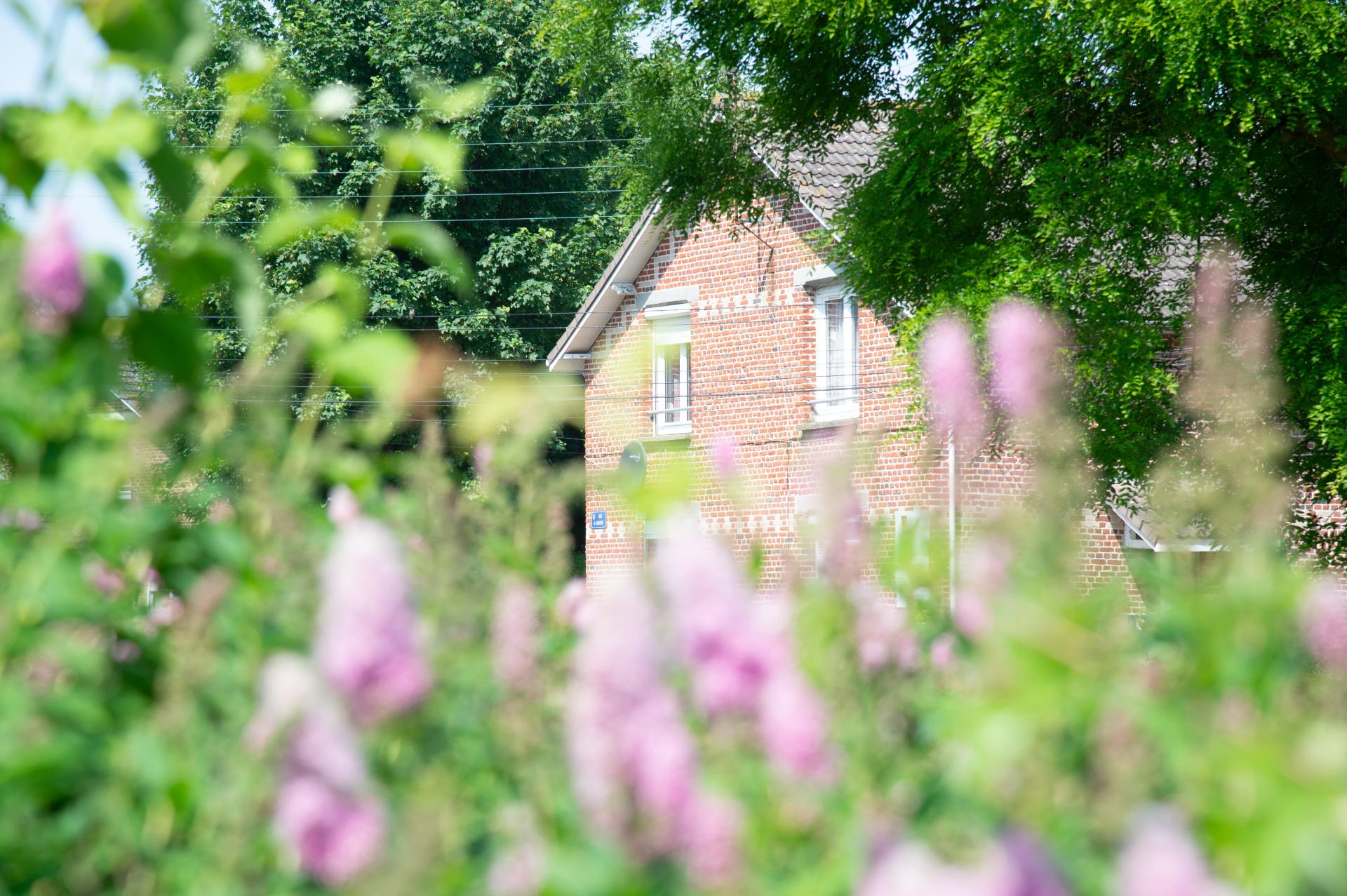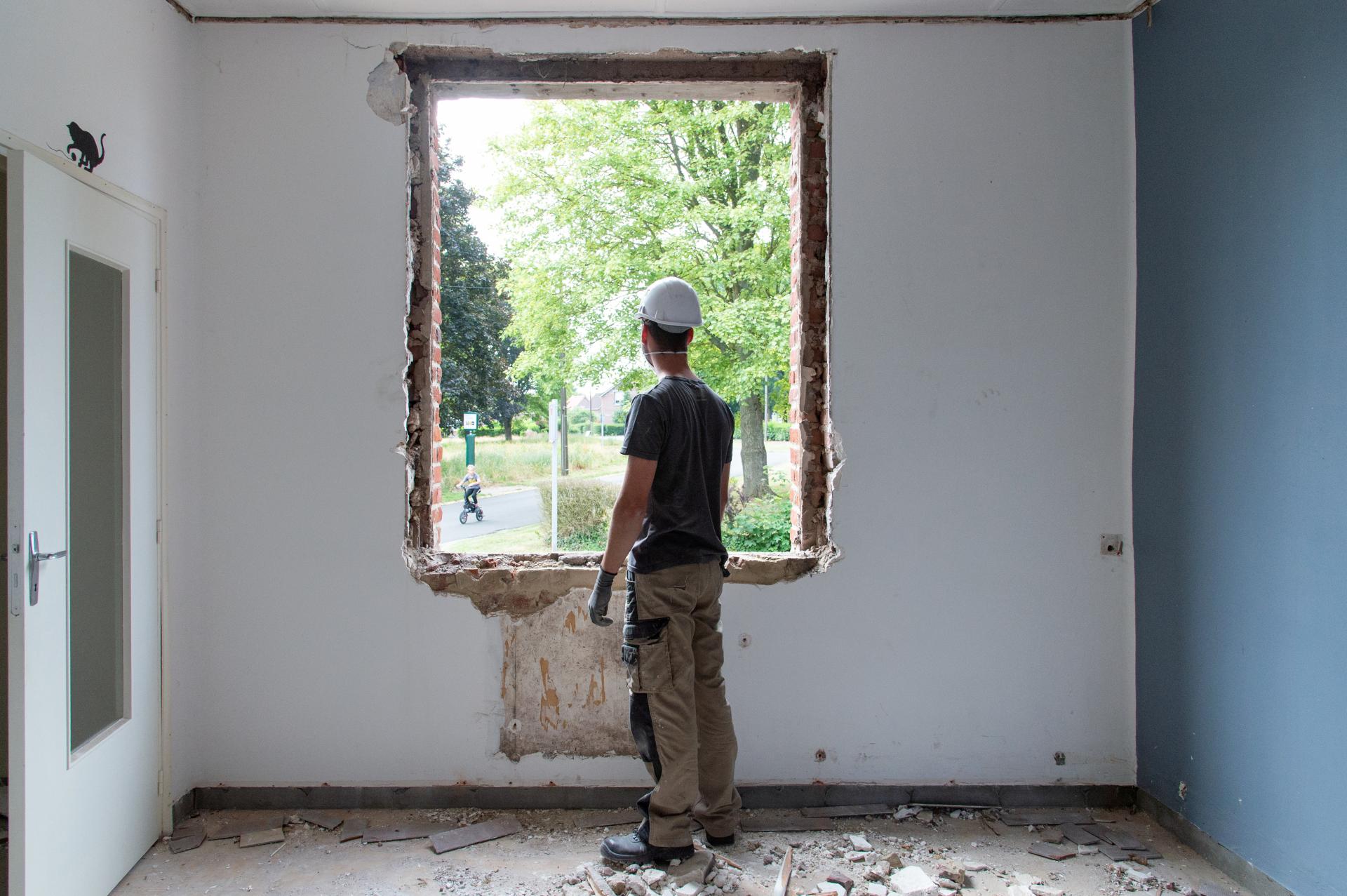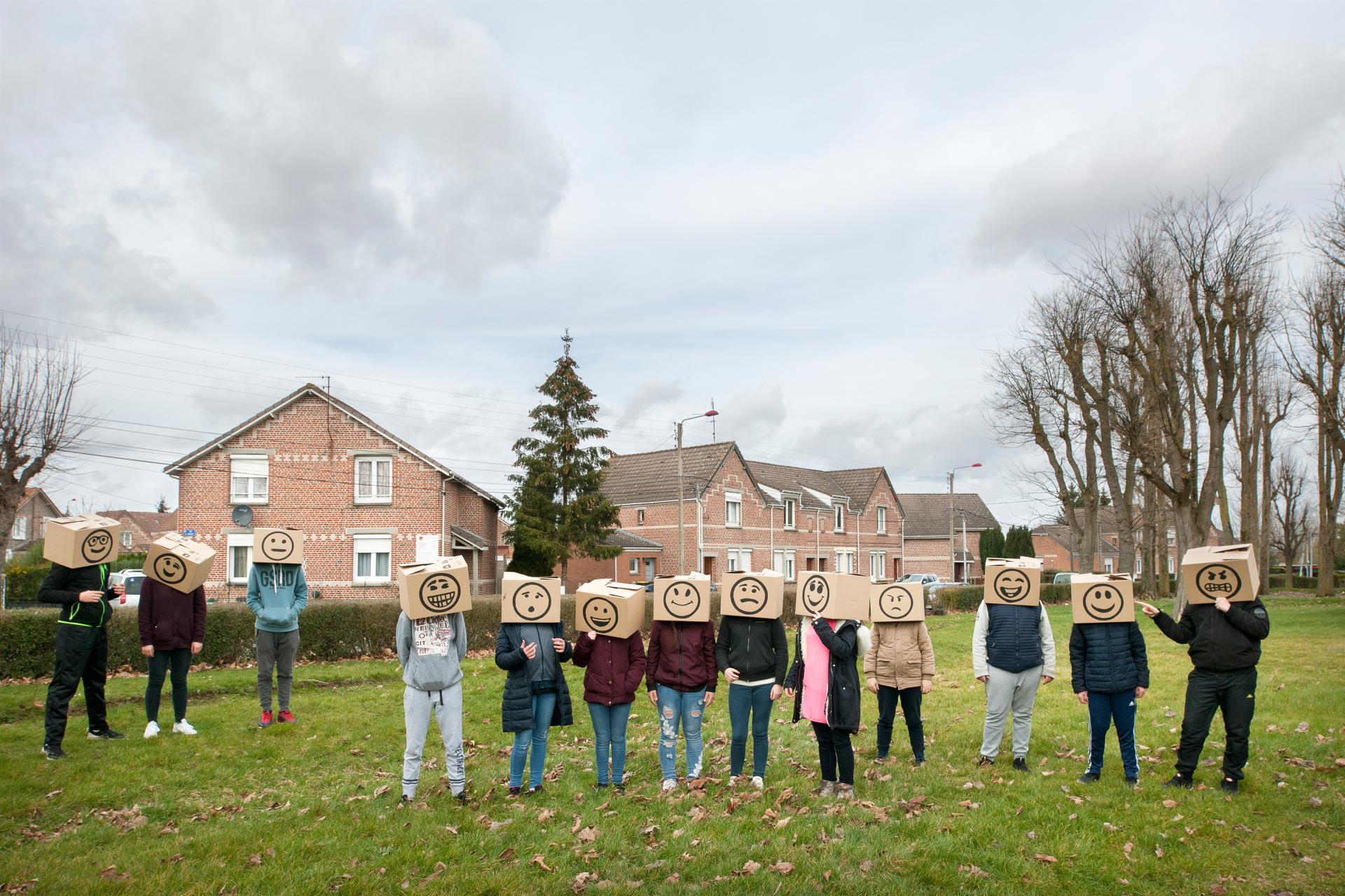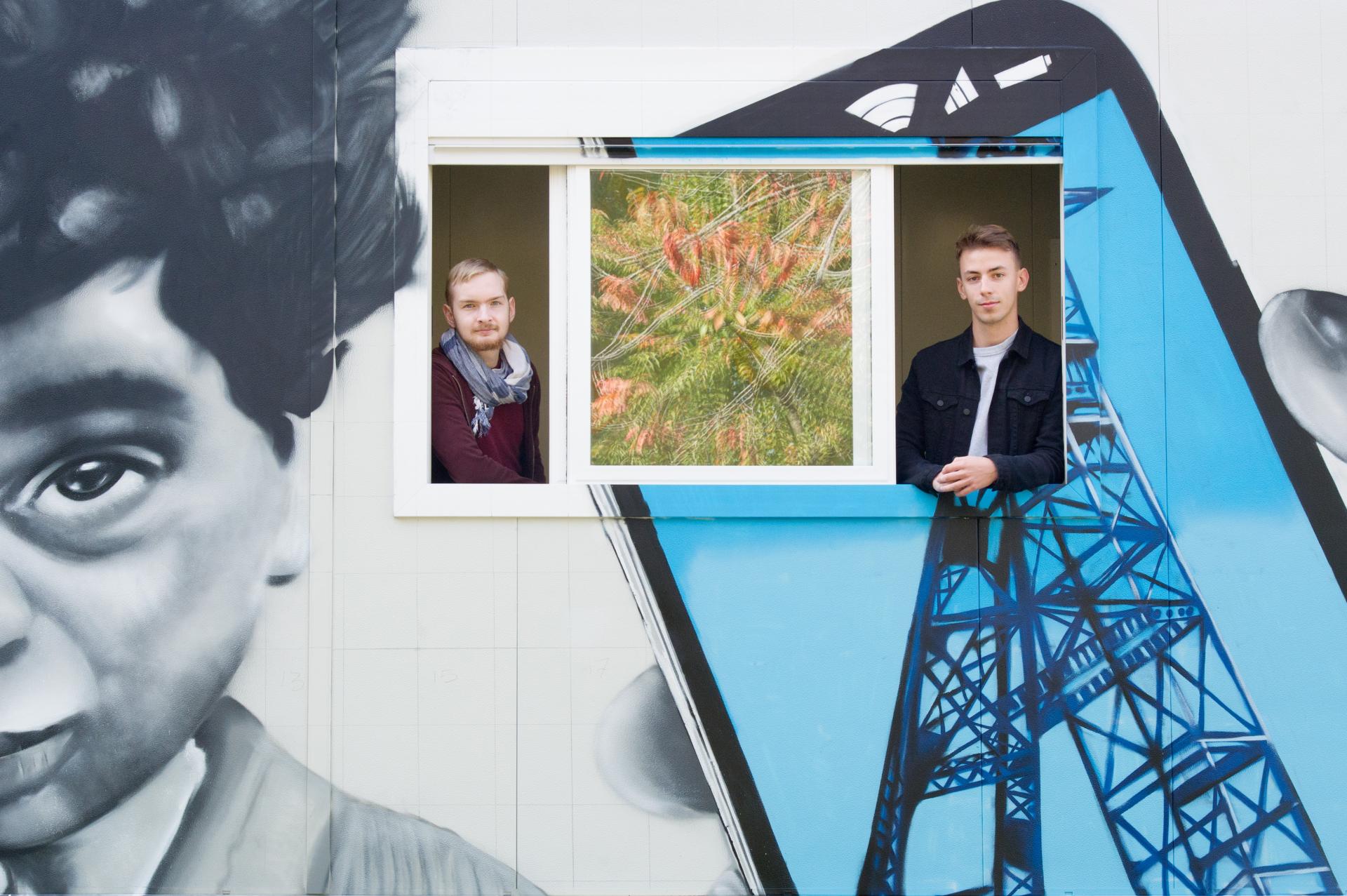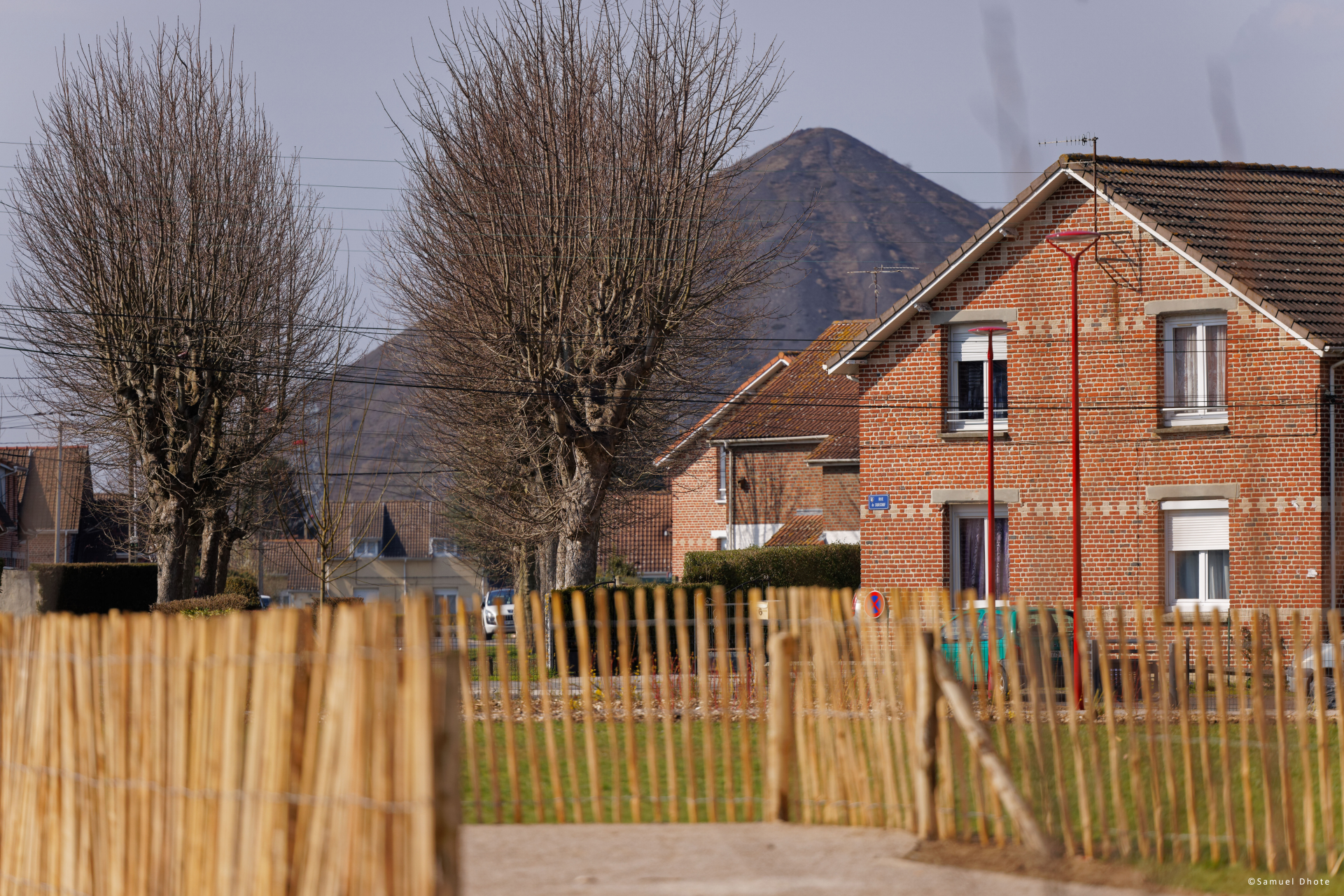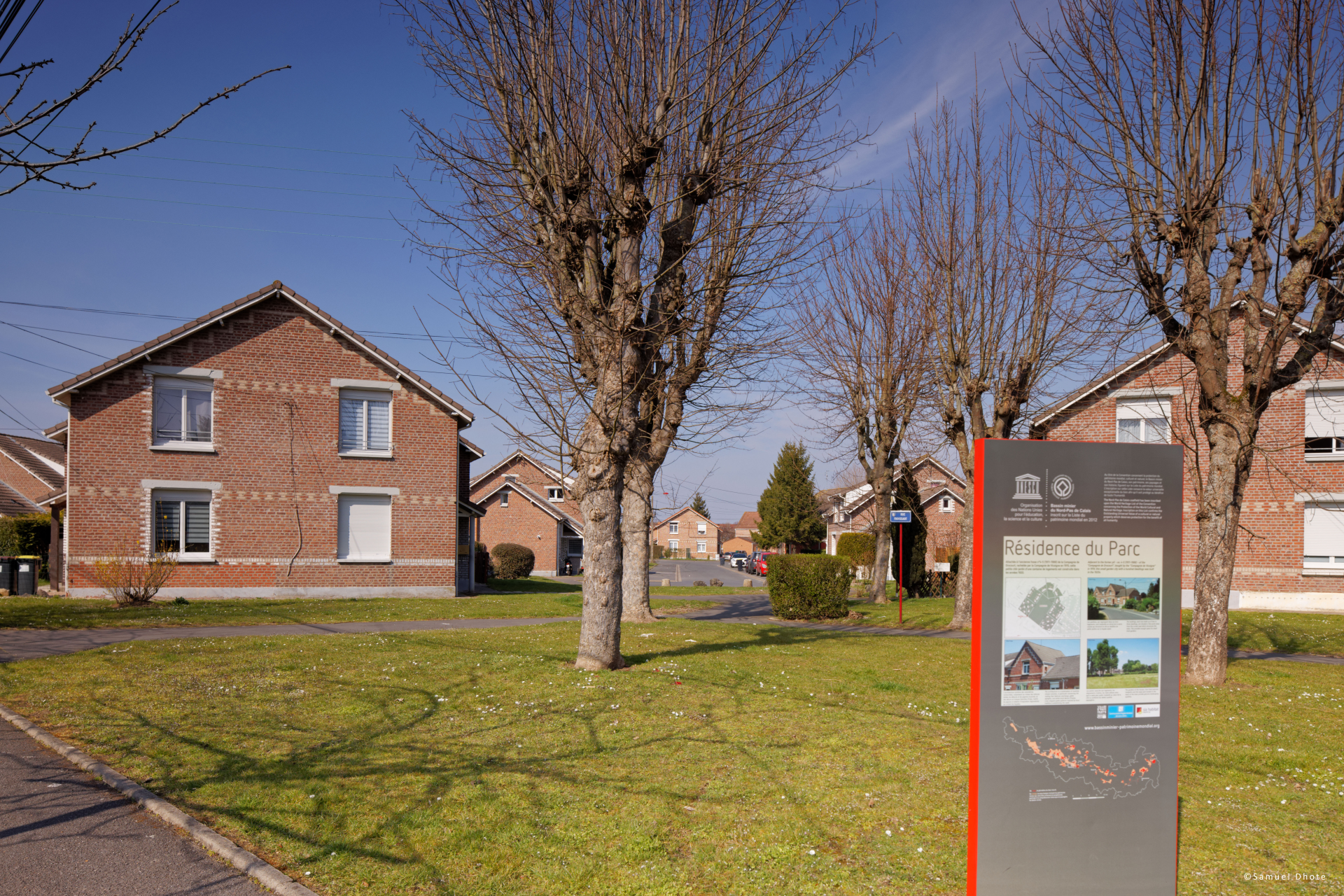Inhabitants in Action
Basic information
Project Title
Category
Project Description
The Résidence du Parc is a district of 118 houses built in the 1920’s for coal miners’ families. Although it is inscribed on the UNESCO’s World Heritage List, many of its inhabitants suffer from social exclusion. The social housing company that now owns the houses led an integrated action on the neighbourhood. It launched an ambitious thermal renovation of the dwellings and, rather than focusing on the technical intervention, built social and artistic projects with tenants and partners.
Geographical Scope
Project Region
Urban or rural issues
Physical or other transformations
EU Programme or fund
Which funds
Description of the project
Summary
The Résidence du Parc, situated in the City of Méricourt in the North of France, is a neighbourhood of 118 houses built in the 1920’s for coal miners’ families. Although it is inscribed on the UNESCO’s World Heritage List, many of its inhabitants suffer from social exclusion. The unemployment and poverty rates are particularly high, and the houses had a low thermal performance.
Sia Habitat, the social housing company that now owns the houses, decided to have an integrated action on the neighbourhood. During the two years that lasted the thermal renovation of the dwellings, Sia Habitat worked with the inhabitants and its partners to improve social well-being.
Three pillars had been defined to guide the intervention. A technical pillar, to lower energy consumptions and reduce the tenants’ spending. A social pillar, to identify the households’ difficulties and to provide them with support. A participation pillar, to involve inhabitants in projects.
The thermal renovation aimed to lower energy consumptions and greenhouse emissions, while keeping the architectural appearance of the houses, part of the mining heritage. It led to a potential 60% cut in the tenants’ energy bills.
To reduce unemployment, every willing person has been proposed with a specific one-to-one coaching. Realized by a non-profit organisation, its purpose was to provide support to job finding and to act on factors that can prevent someone from going back to work (self-confidence, mobility…).
Collective actions were considered as essential to restore social connections. Sia Habitat and its partners organized co-construction workshops and convivial events.
Art was also an important aspect of the project. A photographer, Jean-Michel André, has been working in the neighbourhood for more than two years. He met the tenants, took their portraits, wrote their words, held workshops, with a human-centred approach. An exhibition, a blog and a book have been produced from this work.
Key objectives for sustainability
An important thermal renovation has been conducted on the 118 houses. The façades being protected due to their historic and cultural value, the works could only take place from the inside. The existent partitions and insulation materials were completely taken away and replaced by newer, more performant ones. Windows and doors were replaced. Electricity, plumbery, ventilation and heating systems were renewed.
Besides these energy works, the houses were beautified to make them more pleasant. 24 houses were also adapted to the needs of the elderly.
Energy works importantly reduce consumptions and greenhouse gases emissions. On these ancient housing units, the thermal efficiency was particularly low, with a real impact on comfort and purchasing power. It is estimated that such a renovation permits an average of 60% cut in a household’s energy bill.
This operation is part of a program called “Engagement pour le Renouveau du Bassin Minier”, initiated by various public institutions to transform the Nord-Pas de Calais Mining Basin by acting on various fields (housing, employment, poverty, tourism…). In this context, subsidies are specifically granted to renovate former miners’ houses.
Insulating from the inside implies that the tenants cannot stay in their house and must move for 8 weeks (duration of the renovation project for one house). Before the whole operation begins, 18 housing units were renovated to host families. Inhabitants were temporarily moved to these dedicated places; the move being organized and paid by the landlord. This process necessitates a rigorous time scheduling.
A large park located in the neighbourhood was landscaped after a co-creation process. It resulted in the plantation of 72 trees and 1960 shrubs.
To promote sustainable behaviours, the non-profit organisation PAGE held individual workshops with voluntary tenants to help them produce home-made hygiene and cleaning products.
Key objectives for aesthetics and quality
Aesthetics is present in many aspects of the project, firstly because it contributed to enhance an area inscribed on the World Heritage List.
Aesthetics was also at the heart of Jean-Michel André’s work. For more than two years, the photographer was present on a regular basis in the neighbourhood. His human-centred approach allowed him to enter people’s house, to take portraits and to write down their words.
Part of his work consisted in capturing objects belonging to the inhabitants. Although most of these are everyday life objects (a lamp, a radio…) they relate to intimate stories. Grouped together, they constitute a collective narrative about past and present life in the neighbourhood.
Jean-Michel André also took portraits, pictures of the landscapes, houses and renovation steps (moving out, renovation works…). Not only does this work has an aesthetic value, but it also has a social value. A renovation process can be stressful for the tenants. Some of them have lived for a long time in those houses and are very attached to what they represent in terms of memories. The work done by Jean-Michel André offered the inhabitants the possibility to keep souvenirs of their house as it used to be, and to look to the future more peacefully.
Jean-Michel André also animated workshops with different groups of children attending schools located nearby. During one of those, children wore moving boxes on their heads with different smiley faces drew on. The renovation works had just begun, and it was a way to represent the feelings they could provoke on the inhabitants.
A website has been created to show pictures and texts along the way (https://icietmaintenant.blog/). A book has recently been published and offered to the residents.
An artistic intervention also took place on the “Maison du projet”, set in modular portable offices. A graffiti artist called PARSE (Bertrand Delaporte) painted its faces. He also organized a workshop with the inhabitants.
Key objectives for inclusion
A strong emphasise was made on social inclusion. As previously mentioned, social indicators are low in numerous fields in the Nord-Pas de Calais Mining Basin. Due to this background, many inhabitants have few network, low educational or skill levels along with financial or health issues.
Unemployment, perceived as producing a strong negative impact on many aspects of people’s lives, was considered as one of the most important issue to work on.
Sia Habitat launched a coaching toward employment service, proposed to every tenant that needed it. It was realized by a non-profit organisation with which Sia Habitat concluded a contract, La Sauvegarde du Nord. The coaches provided a personalised, one-to-one support on a regular basis to help persons going back to the job market.
Coaches worked with inhabitants on actions necessary to get a job (CV, job seeking, interview training…) but, more importantly, they adopted a holistic approach to act on every aspect that could prevent a person from going back to work (mobility, childcare, health, self-confidence…).
18 persons participated to the program. 8 of them had found a job at the end of the coaching.
Sia Habitat used a social clause in its public procurement procedure. The contractor had to reserve a certain percentage of its estimated hours of work to disadvantaged persons. Around 29 000 hours were done in this context.
Sia Habitat wanted to get closer to its tenants via this project, listen to their needs and to what they wanted to do in their neighbourhood. “Service Civique” volunteers, along with the landlord’s team, were, as far as possible, in the field, creating direct connections with the inhabitants. Their desires were always considered to organize social events. For instance, a yard sale was hold because 81% of the tenants having answered a questionnaire declared they would be interested.
The park landscaping was a good opportunity to co-create with the tenants.
Results in relation to category
As previously mentioned, the neighbourhood in which the project took place suffers from various social problems. Sia Habitat, along with its partners, tried to construct a project that made sense for the people, gave them consideration and enhanced talents. As a landlord, the will was to have an impact not only on the habitat but also on its inhabitants.
The thermal renovation permitted to bring comfort to the tenants and to reduce their energy consumptions.
Unemployment being a real issue in the neighbourhood and, more largely, the region, taking actions in this domain was considered as a priority. The coaching toward employment service, proposed to any willing person, allowed 8 persons to find a job. It also allowed persons to develop their confidence and to foster a better self-image. The social clause in the renovation procurement procedure led to more than 29 000 hours of work made by disadvantaged persons.
The project allowed persons with sometimes low educational levels and limited access to culture to take part directly in a creative process. The human-centred and pedagogic approach taken by the photographer or the graffiti artist made art accessible. It contributed to reduce psychological barriers that prevent many people getting involved in artistic events.
Being present in the neighbourhood on a regular basis allowed the landlord to modify its relationship to the tenants. Often centred on technical or administrative matters, new fields of exchanges were investigated. The landlord’s staff got a better understanding of the inhabitants’ needs and, at the same time, it permitted the latter to get a better comprehension of the former’s constraints and processes. More largely, it contributed to reduce distance and sometimes mistrust that can exist toward institutions.
How Citizens benefit
Inhabitants were involved in the project in many ways. The “Service civique” (French contract form for young people realizing a paid temporary charity mission) volunteers made a door-to-door inquiry to gather their opinion on different aspects of the life in the neighbourhood. That allowed them to know that a large part of the tenants was interested in the park being improved or in a yard sale for instance. They also identified persons willing to participate to future projects.
Furthermore, inhabitants were involved in concrete actions such as Jean-Michel André’s work or the park landscaping’s design.
The co-construction process relative to the park’s renewal was led by a non-profit organization, Les Saprophytes. The green area is central in the neighbourhood, but it had a bad image, people picturing it as dangerous, dirty or neglected. Co-design helped to imagine its future and helped the inhabitants reappropriating the place. A collective visit, convivial moments and fabrication of wooden public pieces of furniture workshops were held.
Addressing social needs in the different actions that compose the project was a will as well as a necessity. In fact, the renovation process is quite involving for some of the tenants, who must temporarily move to another house before going back to a refurbished one. It is especially the case for the elder or disadvantage people. Therefore, being present and attentive is utterly important.
It is also a necessity to make sure that changes fit the persons’ desires, so that they will make the results theirs. For instance, the park was barely frequented by the inhabitants. Co-construction was a way to make sure it would respond to their needs and would be properly frequented.
Physical or other transformations
Innovative character
Nowadays, social housing landlords are engaged in many thermal renovation projects. In the North of France, the public program “Engagement pour le Renouveau du Bassin Minier” notably aims to increase the number of thermal renovations of former coal miners’ houses.
The innovative character of the project was to take advantage on this renovation, which lasted two years, to have an integrated action on the neighbourhood. Not only did the landlord realized the technical works, but it decided to act on social and cultural aspects to change the neighbourhood in-depth. The belief was that, although it brought many benefits, the thermal renovation would not be sufficient to reduce social vulnerabilities and modify the image of the area.
The project was also innovative because it implied partners from different backgrounds: public institutions, non-profit organizations, contractors, artists and the landlord. It was an opportunity to cooperate and to get a better understanding of each other constraints.
Learning transferred to other parties
Sia Habitat has reproduced the project’s concept and method on various renovation sites. A designated team has been created and a name given to the whole approach: Co&SIA (for “Cohesion” and “Sia Habitat”). The process always begins with an analysis of the territory to understand its strengths and weaknesses. A set of actions is then defined. It can differ from a neighbourhood to another, but some measures are systematic: presence of “Service Civique” and coaching toward employment. In most projects, community gardens and training on permaculture are henceforth conducted.
This integrated approach has notably been adopted by Sia Habitat in another former miners’ neighbourhood: the Cité du Pinson in Raismes. A subsidy aiming to finance innovative, concrete and reproducible propositions to reinforce impact of social housing on their local ecosystem was granted for this project in 2018. To facilitate the transfer of concepts to other territories and actors, a series of notes were written and published (https://www.banquedesterritoires.fr/renovation-dune-ancienne-cite-miniere-inscrite-sur-la-liste-du-patrimoine-mondial-de-lunesco-sia - in French).

